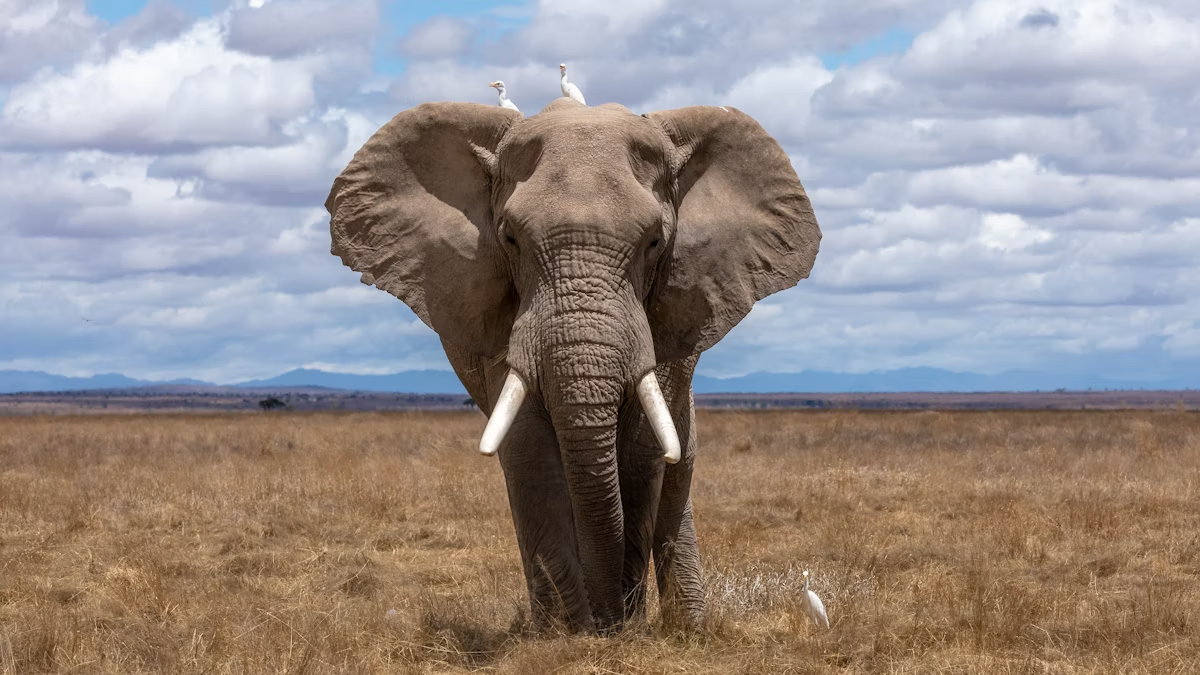Introduction: Hearing the Quiet Discussions:
For centuries, human comprehension of animal communication was restricted to auditory cues such as dolphin clicks, wolf howls, and bird songs. However, the great majority of the conversation was lost on us. A complex, invisible network of communication pulsates through savannas, forests, and oceans beneath our auditory threshold. Animals participate in intricate, long-distance networks that are essential to their survival, in addition to communicating with their immediate neighbours.
Finally being able to “listen” to these networks may be the key to successful conservation. We can create far more effective tactics if we go beyond defending lone animals or even isolated herds to defending their communication channels. This 2,500-word analysis examines how state-of-the-art research is deciphering these networks, which include whale song, tree-top vibrations, and elephant infrasound, and why this knowledge is transforming the field of wildlife protection.
1. The Unseen Language: Illustrations of Animal Communication Systems
Without the aid of technology, animal communication networks frequently employ channels that are invisible to humans.
A. The Long-Distance Call of Elephant Infrasound:
- How it Works: Elephants emit infrasound, which are low-frequency rumbles that travel over ten kilometres through the air and through the ground as seismic vibrations. The Network Function: These rumbles are more than just shouts.
- They provide precise details regarding identity, reproductive status, and cautions. Males can find possible mates from miles away, and a matriarch can plan the movement of her scattered family. This makes it possible for several family groups to come together as a large, well-organised “meta-herd.”
B. The Oceanic Internet: Whale Song:
- How it Works: Like humpbacks and blue whales, baleen whales can travel thousands of kilometres through the ocean’s sound channels (SOFAR channel) with their strong, low-frequency songs.
- The Network Function: Throughout entire ocean basins, these songs are utilised for navigation, mating, and preserving social ties. Human noise pollution is currently interfering with the pan-oceanic information network it creates.
2. The Conservation Crisis: The Network Is Disrupted by Human Activity:
- Habitat Fragmentation: In addition to reducing living space, roads, farms, and urban sprawl divide the landscape, forming “walls” that prevent low-frequency sounds from travelling through the area and block seismic vibrations (for elephants). As a result, groups become isolated and are unable to exchange important information.
- Pollution from noise:
On Land: Infrasound and other low-frequency signals are obscured by the din of industry, machinery, and traffic.
In the ocean, military sonar, shipping traffic, and seismic airgun blasts for oil exploration produce an acoustic fog that drowns out whale sounds, confusing the animals and causing collisions, strandings, and disturbed feeding.
Population Decline: The quantity of participants determines the strength of a network. The flow of information will collapse catastrophically as animal populations decline because there will be fewer individuals to transmit and receive messages. The network itself becomes worthless, much like when a social media site loses the majority of its users.
3. Network Conservation: The Emerging Science:
These communication networks are now being mapped and safeguarded by conservationists using technology.
- Researchers use networks of autonomous recording units (ARUs) to monitor bioacoustics in both land and marine environments. By recording sound around-the-clock, these “listening posts” enable researchers to map communication hotspots, pinpoint important corridors, and track population health by examining the volume and nature of calls
- Seismic Sensors: In order to completely comprehend elephant communication, scientists install geophones in the ground to pick up the seismic component of their rumbles. This allows them to create a three-dimensional map of the elephants’ “vibrational landscape.”
- Network Theory: Scientists can identify “influencer” animals (such as matriarch elephants) whose protection is disproportionately important for the stability of the network by using mathematical models from social network theory.
4. Real-World Uses: From Concept to Safe Spaces
Conservation tactics are becoming more intelligent and successful as a result of this new knowledge.
- Creating Ecological Corridors: New corridor designs seek to make ecological corridors “acoustic corridors”—routes where communication signals can flow freely—rather than merely linking habitat patches for physical movement.
- Controlling Noise Pollution: Marine noise reduction zones and ship speed and route regulations are being argued for using data on animal communication ranges. On land, it can affect where wind farms and new roads are located.
- Anti-Poaching: By using real-time acoustic monitoring to identify the sounds of firearms, chainsaws, or automobiles in protected areas, rangers can react to unlawful activity faster.
- Translocation Success: It is essential to comprehend the communication networks of animals when relocating them. A lone person may experience stress, conflict, and failure if they are relocated to an area where they are unable to connect to the local social network.
5. The Ethical Aspect and Prospects:
We are forced to acknowledge the complexity and sophistication of animal networks when we listen to them.
- A Change in Viewpoint: It shifts the focus of conservation from a strictly quantitative objective (growing the population) to a qualitative one (maintaining social and cultural integrity). It becomes imperative to preserve the “culture” of elephant clans or whale pods.
- The Role of AI: In order to analyse the enormous datasets gathered by bioacoustic monitors and spot patterns and particular calls that would be impossible for humans to process, artificial intelligence is becoming indispensable.
- A Holistic Approach: Since a healthy ecosystem is both acoustically and visually intact, the ultimate objective is to manage entire “soundscapes” and “vibrational landscapes.”
FAQ
We’re not a straight “translation” like in a film. Nonetheless, scientists are able to link particular sounds to particular contexts by means of meticulous observation and AI analysis. A honeybee’s dance that indicates the direction and distance of nectar, an elephant’s “let’s go” rumble, or a prairie dog’s call for a “hawk” as opposed to a “human.” If not the exact syntax, we understand the function.
Consider a road as establishing a “zone of silence.” On either side of a busy highway, an elephant’s infrasound rumble, which would typically travel 10 km, might only travel 1 km. This disrupts social cohesion and resource sharing by creating an acoustic barrier that breaks the connection between groups on either side, even if they are physically close enough to see one another.
One direct way to help is to support conservation organisations that use bioacoustic monitoring. Broadly speaking, the core causes of network disruption are addressed by supporting laws that lessen habitat fragmentation and mitigate noise pollution, such as those requiring quieter ship engines and wildlife overpasses or underpasses on highways.

